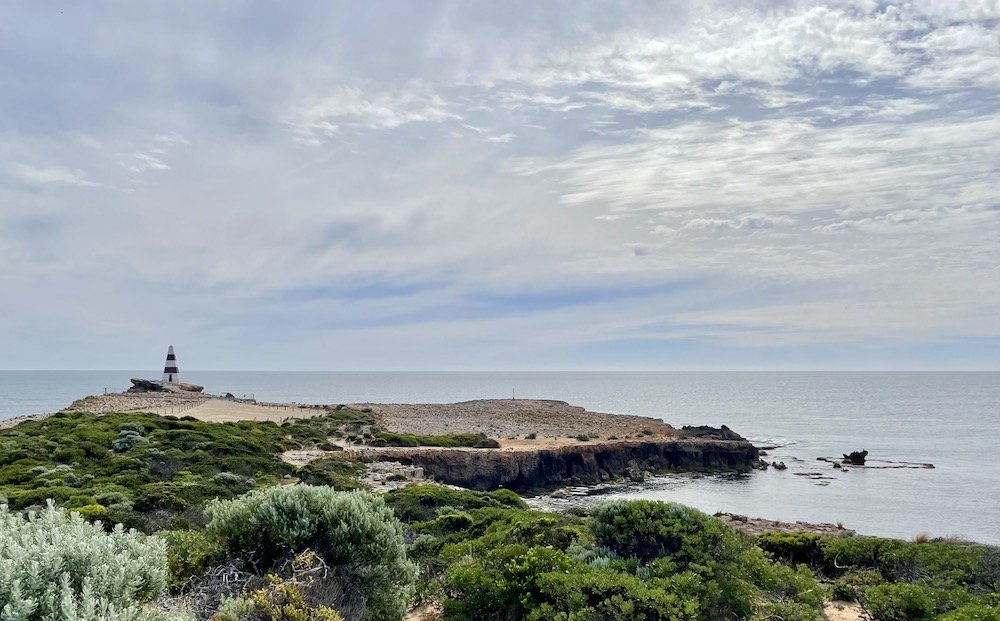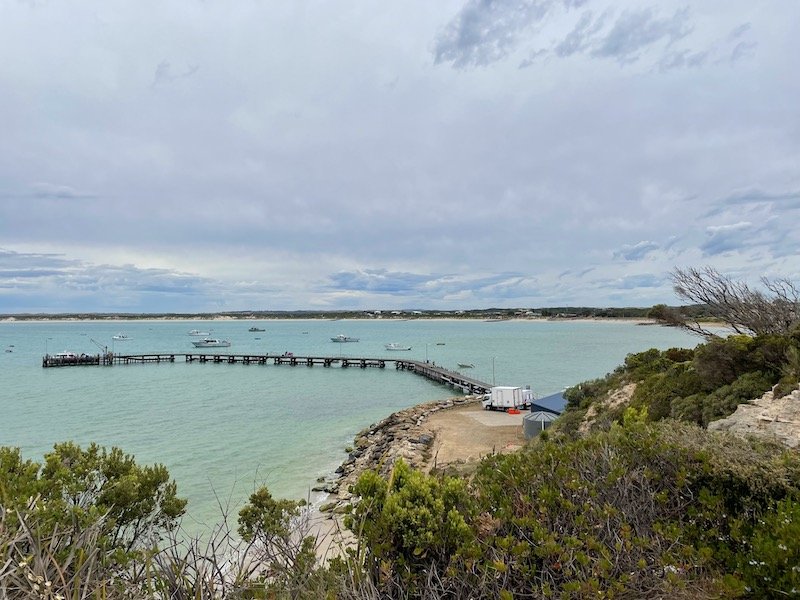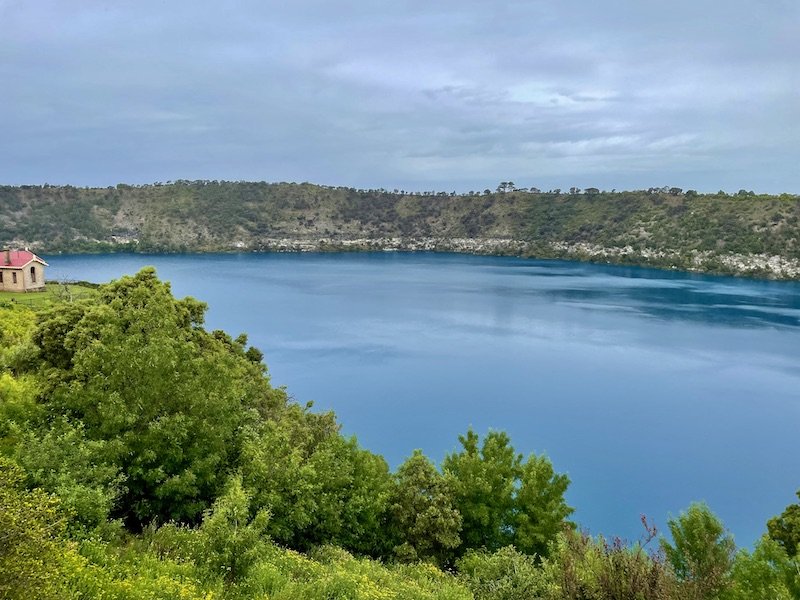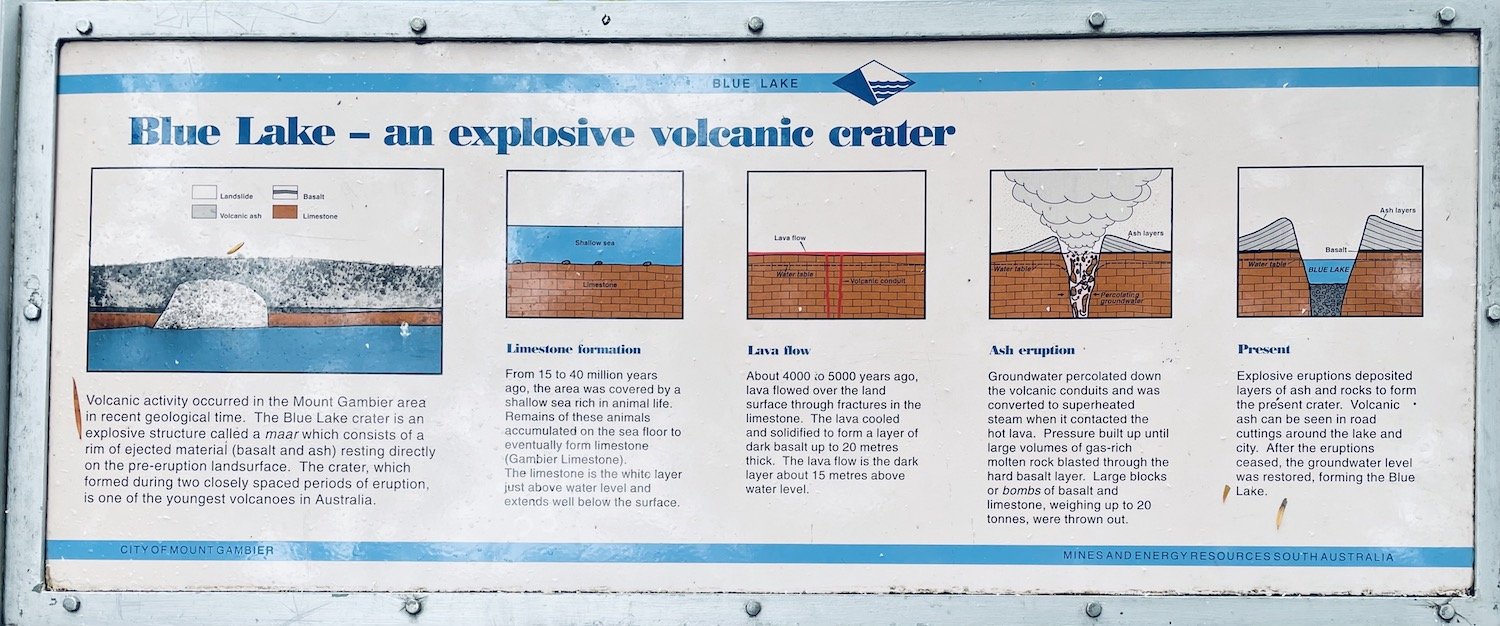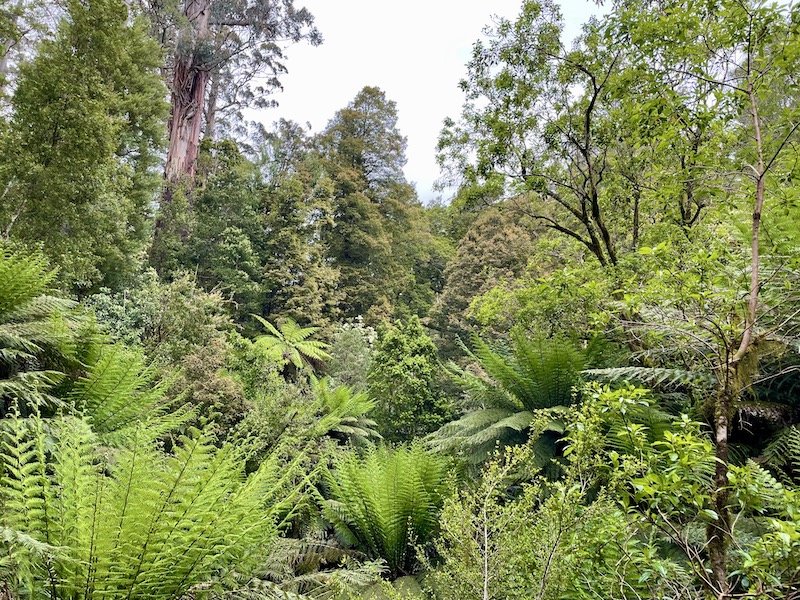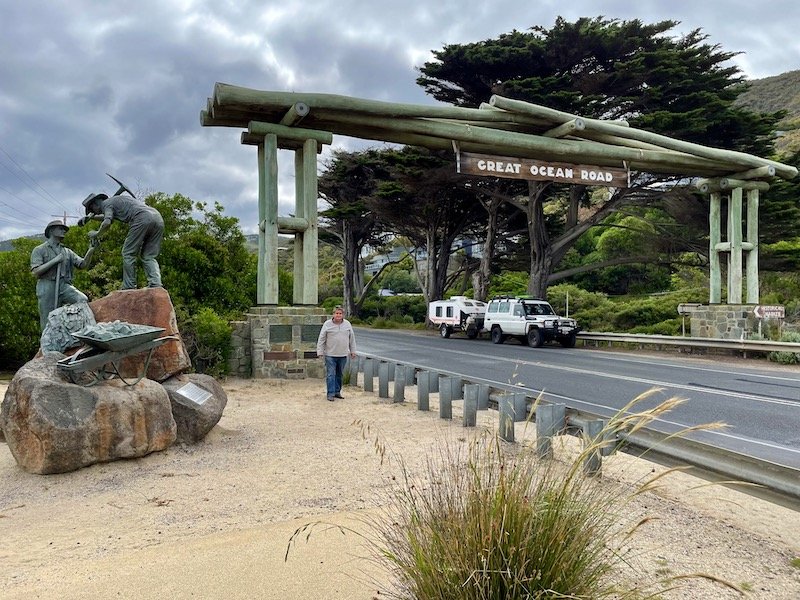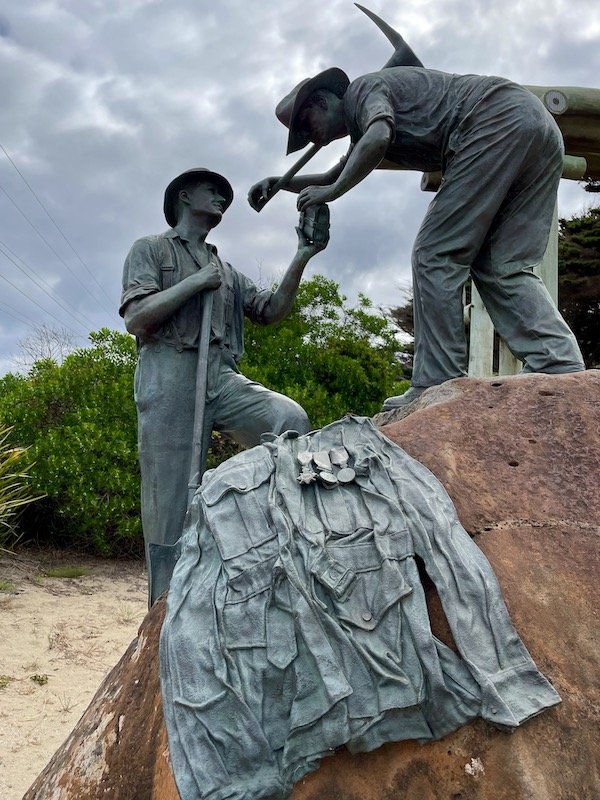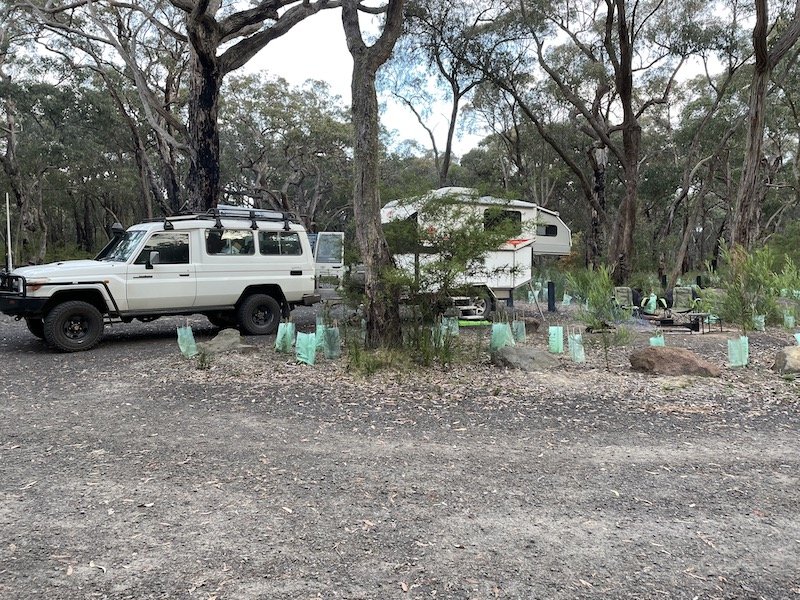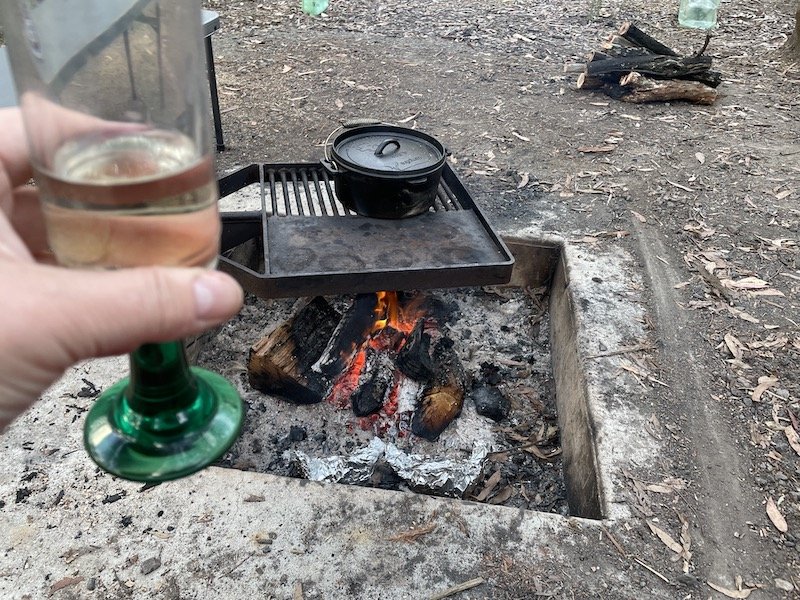Next to the Southern Ocean
Madura Ridge, WA
Our last camp before hitting the Nullarbor provided the most amazing view over the plain. We were up on the ridge to the north of Madura; there’s nothing there, no facilities, no people just a bit of bush and stars. Pretty good I reckon.
Eucla time zone
A funny thing is going on around the border town of Eucla; they have their own little time zone called Australian Central Western Standard Time (ACWST) locally known as Eucla time. Australia has three main time zones, except when there’s daylight saving in SA and NSW/Vic and then it has five. But it also has this special little one which exists for about 340 kilometres between the western and central zones and takes in the tiny roadhouse communities of Cocklebiddy, Madura, Eucla and Border Village. There is a 1.5 hour difference between the Western and Central time zones and Eucla time is in the middle. Although unofficial, it’s recognised by everyone, even my iPhone ticked forward 45 minutes as we entered the zone and another 45 minutes as we left.
When we were heading west last September, we discovered that the Nullarbor Plain is a beautiful expanse of ever-changing nothingness, though, bizarrely, it’s not dull, even though the road is straight with stretches where there are no bends for up to 90miles. We liked it just as much going east and had the added bonus of a tail wind that improved our fuel consumption.
The road is close to the Southern Ocean with many lookouts to view the dramatic coast line. At each one it’s possible to see how the sea is constantly shaping the cliffs as there are many old paths that suddenly end at the cliff edge where a section of ground has just dropped into the waves. At the imaginatively named Scenic Lookout No.1, we opened the door of our air-conditioned box to be hit by a hot on-shore wind blowing off the desert that felt like opening the door of a fan oven. We’d never experienced anything like it and just stood still just for the weird feeling of hotness blowing though our clothes and hair.
We called in again for a two night camp and swim at the beautiful Perlubie Beach before heading across the top of the Eyre Peninsular and into Adelaide where stayed a few nights at our starting point, the Belair National Park Holiday Park. This was partly because it’s a lovely site but also because we had used it as a postal address for several things. In particular, our SA drivers licences and vehicle registrations which they had kindly told us had arrived and safely cared for on our travels. We had a lovely time catching up with our friends, Paul and Felicity, then got back on the road.
We were on a bit of a mission to reach Melbourne before 28th November for my sister-in-law, Roberta’s 80th birthday but we didn’t want to just dash back in a couple of days. We took five days to travel the 1000km following the coast road and stopped to see things that weren’t too far off the route. One of the first was Kingston South East which has a 17m high ‘big lobster’ sculpture, named Larry, at the towns entrance designed to draw attention to the visitors centre. The other main attraction is the Cape Jaffa Lighthouse, now decommissioned, it once stood on a platform that is still in place on the Margaret Brock Reef 7km west of Cape Jaffa. It We would have liked to go up this impressive structure but it’s only on certain days or by prior arrangement.
Giant Lobster sculpture, Kingston SE, SA (photo credit to Stephen Langman)
Old Cape Jaffa lighthouse, Kingston SE, SA.
Next stop was Robe, home to the Robe lighthouse that replaced the one at Cape Jaffa. Built in 1972, it is an elegant concrete structure and has always been automated. Prior to its construction, the only navigation point for ships entering this once important port, was an obelisk built in 1855 and only of use in daylight. This simple red and white pyramidal structure now stands precariously on a heavily eroded cliff and probably doesn’t have long before it too falls into the sea. Even painting it is deemed too risky.
Robe Obelisk, Robe, SA
Robe Lighthouse, Robe, SA (photo credit to Gary Searle)
A little further around the coast is the small town of Southend, a somewhat more gentle spot than its British namesake. We found the limestone coast to be fascinating; the geology and erosion provides endlessly changing shapes and colours. I imagine visiting the same place over time would only add to the interest. One of the more curious features are solution holes, formed by the acid from ancient rotting tree roots eating away at the rock to leave holes. It seems to be the negative to the way the Pinnacles over in WA were formed. These holes can be seen as tubes through which the sea squirts as the waves undercut the shore or as hemi-tubes making a corrugated appearance to a cliff.
Limestone Coast to the east of Southend, SA
Southend harbour, SA
Coastal erosion, Southend, SA
Solution Holes, Southend, SA
As you know, we like a good ‘grotte’ so we called in at the Tantanoola Caves Conservation Park. The story goes that back in 1930, a young lad lost his ferret down a hole and wiggled in to look for him only to find a spectacularly decorated cave system. He went off to fetch his big brother to explore further but they soon realised that Dad was needed. The family carefully opened up the caves and showed hundreds of visitors around them for nearly 50 years until new public health and safety rules meant they needed further support. Parks Australia took on management and made the necessary adjustments. The family were keen that the caves be as accessible as possible and today they are just that, most paths are step free with handrails and well lit to complement the cave decorations.
As we crossed into Victoria, we came to the port of Portland, the oldest European settlement in the state built, as they all were, on unceded land whose traditional owners are the Gunditjamara people. This Aboriginal group are unusual in that they built huts and were more settled in a single area than other groups. This is thought to be as a result of the temperature and the plentiful supply of fish and eels in the region. We did not have the opportunity on this occasion to find out more about their heritage but have since learned that the Budj Bim Cultural Landscape that has recently been designated a UNESCO world heritage area is considered to be one of the oldest and most extensive aquaculture systems on earth. We hope to explore further when we return to this area in about a years time.
We had read about a lake in a volcanic crater that was especially blue so, taking an inland detour, we went to see the Blue Lake Reserve. It is indeed very blue, even on the dull day we visited, and apparently the colour is even more vibrant between December and March. According to WikiPedia the exact cause of this phenomenon is still not fully understood, but it it likely to involve the warming of the surface layers of the lake during the summer to around 20 °C, causing calcium carbonate to precipitate out of the solution and enabling micro-crystallites of calcium carbonate to form. This results in scatter of the blue wavelengths of sunlight.
Blue Lake, Mount Gambia, SA
The formation of the Blue Lake, Mount Gambia, SA
The weather was pretty squally so our planned overnight stop on an exposed cliff at Port MacDonnell didn’t seem such a good idea. We did stop to have a look and had a short walk along the coastal path where we could see the extent of the spectacular coastal erosion; in places roads have just dropped into the sea.
The cliff top spot we chose not to camp! Port MacDonnell, SA
Port MacDonnell headland, SA
Camel Rock (use your imagination!) Port MacDonnell, SA
The town of Portland has the only natural deep water port between Adelaide and Melbourne and, as we ate our lunch in the foreshore park, we watched the massive semi-trailers unloading their grain for export. These giant trucks, each with two trailers, drive up on to one of three tipping stations and the whole truck, cab and all, is tipped up to about 45 degrees and the grain flows out the back. The grain and much of the timber and minerals are all exported to Indonesia and Asia. Like many counties, Australia exports raw materials to be made into things we think we need in countries where there’s cheep labour and poor human rights for workers, then buys back the finished items to sell to consumers at a profit whilst outsourcing its emissions. The planet cannot sustain this level of exploitation, society striving for eternal growth cannot continue; we need to switch to degrowth.
We followed the A1 Prince’s Highway until the turning onto the B100 which zig zags between flat fields until it becomes The Great Ocean Road. The winding road hugs this stunning stretch of limestone coastline but for the best views, you need to park and walk out to the many look-outs in the Bay of Islands Coastal Park, we couldn’t resist stopping at them all. Although the Twelve Apostles are one of the most sought out tourist spots with massive parking and facilities for coach parties, many of the less well known lookouts are more spectacular and considerably less crowded. I absolutely love this coast, its yet another fascinating place I wish I could talk to my Geography teacher about.
The road turns inland and steeply rises as it winds through the dense forest of The Great Otway National Park where we stopped to walk the magical Maits Rest Rainforest Trail. The trail has been gently created to disturb the forest as little as possible and is a combination of narrow forest floor track and board walks. The smells and sounds were delicious in equal measure as you will see from this video (make sure your volume is turned up for the best effect).
Maits Rest Rainforest Trail, Great Otway National Park, Vic
There are many pretty seaside towns along the way and we picked Apollo to have lunch along the strip. As we drove out, a grumpy looking koala, decided to just sit in the middle of the road. He was one of those old, moth-eaten ones that look like they’ve been in a lot of fights and, after holding up the traffic for a bit, just upped and wandered off.
Towards the eastern end of the road, we found the Great Ocean Road Memorial Arch. It turns out that the entire 240km stretch of road is listed as an Australian National Heritage site and is the world’s largest war memorial. The road was built by soldiers returning home from the first world war as a memorial to their fallen comrades. As I studied the exquisite detail of the bronze diggers monument, I wondered how these men might have felt about undertaking such a task; perhaps the physical work helped them process the horrors of war..
We had one final night free bush camping at Hammond Road site at Wensleydale (which can’t be said without following with the name Gromit!). Dinner cooking over the fire and glass of bubbly amongst the gum trees, life doesn’t get much better!
We finally arrived in Melbourne at the home of my eldest brother, Ken, and his wife Roberta. This is where we had planned to start our travels but, due to the tight Victorian COVID restrictions, we chose to stay away until the city opened up a bit. So it was great to join our family just in time for Roberta’s 80th birthday.





